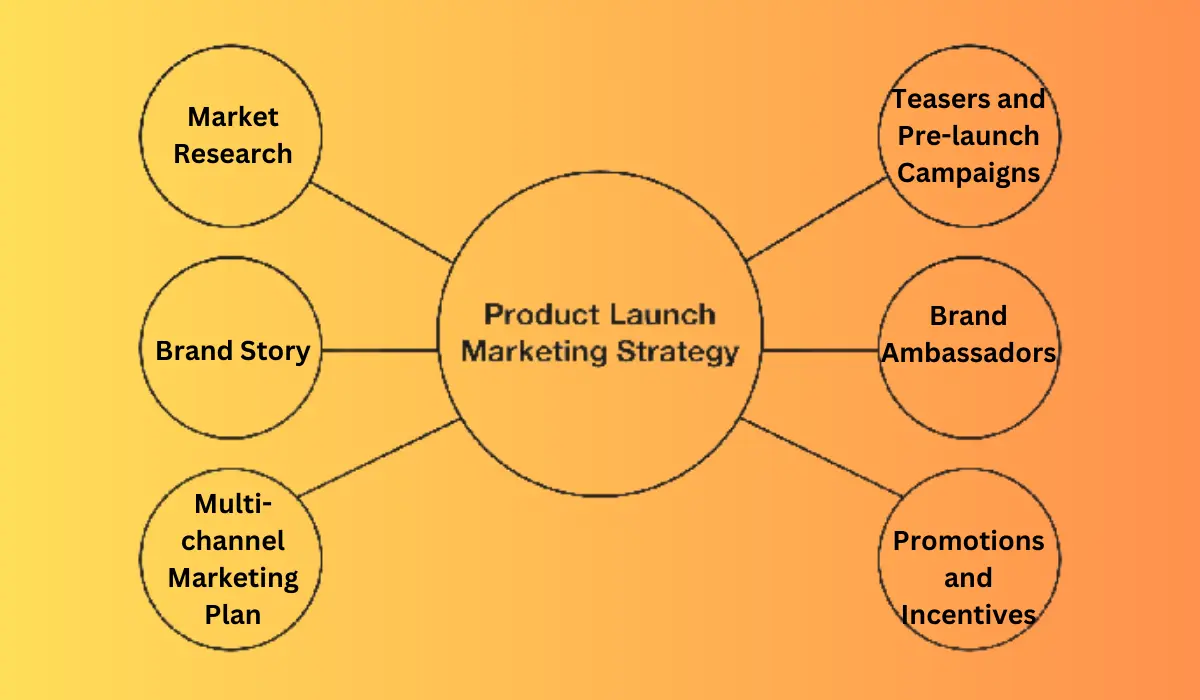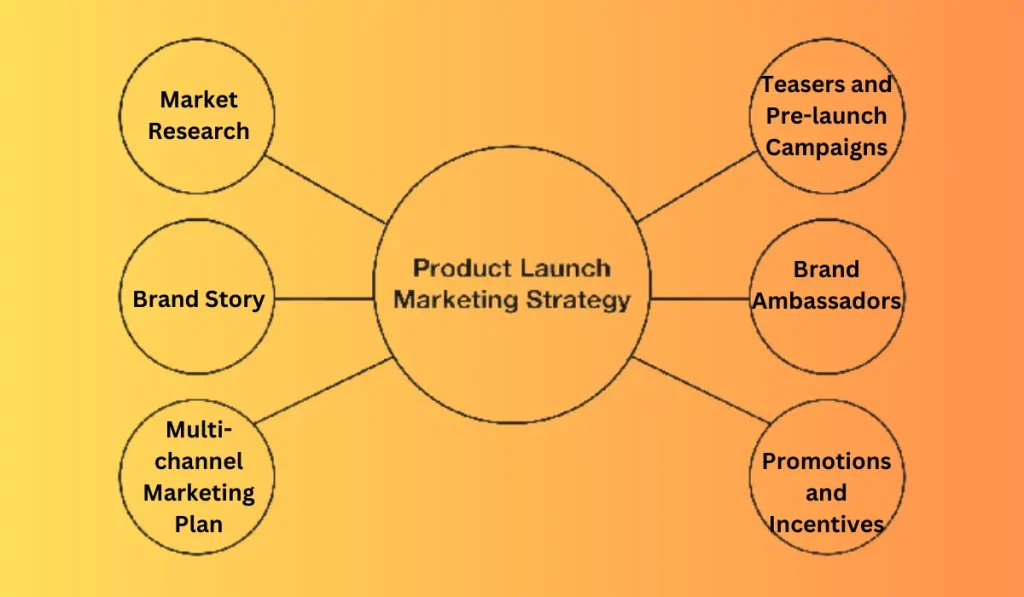Launching a new product into the market can be an exhilarating yet challenging endeavor for any business. With careful planning and a well-executed marketing strategy, however, you can maximize your chances of success and make a significant impact on your target audience. In this article, we’ll explore some essential steps and considerations to help you craft an effective marketing strategy for your new product launch.
Importance of New Product Launch Strategy
The importance of a new product launch strategy cannot be overstated in today’s competitive business landscape. Here are several reasons why a well-executed launch strategy is crucial for the success of a new product:
1. Establishes Market Presence and Awareness:
A strategic product launch introduces your offering to the market and creates awareness among your target audience. It’s an opportunity to make a memorable first impression and differentiate your product from competitors.
2. Generates Buzz and Excitement:
A carefully planned launch generates anticipation and excitement among consumers, driving interest and engagement. Leveraging teaser campaigns, sneak peeks, and pre-launch promotions can build momentum and generate buzz around your product.
3. Drives Sales and Revenue:
An effective launch strategy can drive immediate sales and revenue by capitalizing on the initial wave of interest and enthusiasm. Special promotions, discounts, and incentives encourage early adoption and prompt customers to make purchasing decisions.
4. Builds Brand Credibility and Authority:
A successful product launch enhances your brand’s credibility and establishes you as a trusted authority in your industry. By delivering a high-quality product that meets or exceeds customer expectations, you build trust and loyalty with your audience.
5. Attracts Investors and Partnerships:
A well-executed launch can attract the attention of investors, potential partners, and collaborators who see the value and potential of your product. A strong market response and positive reception increase your credibility and attractiveness to external stakeholders.
6. Sets the Stage for Long-Term Success:
A successful launch sets the stage for long-term success by laying a solid foundation for future growth and expansion. Positive customer feedback, sales data, and market insights gathered during the launch phase inform future product iterations, marketing strategies, and business decisions.
7. Maximizes Return on Investment (ROI):
Investing time, resources, and effort into a comprehensive launch strategy maximize the return on investment for your product development efforts. You increase the likelihood of achieving your sales and revenue goals by effectively reaching and engaging your target audience.
8. Fosters Customer Engagement and Loyalty:
Engaging customers throughout the launch process fosters a sense of involvement and ownership, leading to increased loyalty and advocacy. Providing opportunities for feedback, participation, and interaction strengthens your brand’s and its customers’ relationship.
9. Positions of the Product for Long-Term Growth:
A strategic launch positions your product for sustained growth and success in the marketplace. By gaining initial traction, market share, and brand recognition, you create a solid foundation for continued expansion, innovation, and market penetration.
10. Adaptation and Iteration:
Lastly, a well-planned launch strategy allows for adaptation and iteration based on real-time feedback and market dynamics. By continuously monitoring performance metrics and consumer insights, you can refine your approach, address challenges, and capitalize on emerging opportunities.
Also Read
Marketing Strategy for New Product Launch
A new product launch strategy is essential for achieving your business objectives, driving sales, building brand equity, and securing a competitive advantage in the market. By investing time and resources into a thoughtful and strategic launch plan, you position your product for success and set the stage for long-term growth and profitability.
Top of Form
1. Market Research:
Before diving into the marketing process, it’s crucial to conduct thorough market research. Understand your target audience, their preferences, needs, and pain points. Analyze your competitors to identify gaps in the market and opportunities for differentiation. By gathering valuable insights, you can tailor your marketing efforts to resonate with your audience effectively.
2. Define Your Unique Selling Proposition (USP):
What sets your product apart from the competition? Clearly define your Unique Selling Proposition (USP) – the unique benefit or advantage that your product offers to customers. Whether it’s innovative features, superior quality, or unmatched customer service, your USP should be the cornerstone of your marketing messaging.
3. Develop a Compelling Brand Story:
Consumers are drawn to brands with compelling stories that evoke emotions and resonate with their values. Develop a narrative around your product that communicates its purpose, journey, and the problem it solves. Your brand story should be authentic, engaging, and consistent across all marketing channels.
4. Create a Multi-channel Marketing Plan:
A multi-channel marketing approach allows you to reach your audience through various touchpoints, maximizing exposure and engagement. Consider utilizing a combination of online and offline channels such as social media, email marketing, content marketing, influencer partnerships, PR, events, and traditional advertising. Each channel should complement the others to create a cohesive brand experience.
5. Build Anticipation with Teasers and Pre-launch Campaigns:
Generate excitement and anticipation for your new product by teasing its features and benefits through teaser campaigns and sneak peeks. Leverage social media platforms, email newsletters, and your website to provide exclusive glimpses of the product and encourage pre-launch sign-ups or pre-orders. Building anticipation can help generate buzz and momentum leading up to the official launch.
6. Leverage Influencers and Brand Ambassadors:
Influencer marketing can be a powerful tool for amplifying your product launch and reaching a broader audience. Identify influencers and brand ambassadors whose values align with your brand and target demographic. Collaborate with them to create authentic content, reviews, and endorsements that showcase your product to their followers.
7. Offer Special Promotions and Incentives:
Encourage early adoption and drive sales by offering special promotions, discounts, or incentives for customers who purchase your new product during the launch period. Limited-time offers, bundle deals, or exclusive gifts can create a sense of urgency and motivate customers to take action.
8. Gather Feedback and Iterate:
The launch of your product is just the beginning of its journey. Continuously gather customer feedback through surveys, reviews, and social media interactions. Pay attention to their comments, suggestions, and pain points, and use this feedback to iterate and improve your product and marketing strategy over time.
9. Measure and Analyze Performance:
Track key metrics and performance indicators to evaluate the success of your marketing efforts. Monitor metrics such as website traffic, conversion rates, social media engagement, and sales revenue. Use analytics tools to gain insights into customer behavior and identify areas for optimization and refinement.
10. Stay Agile and Adapt:
The marketing landscape is constantly evolving, so it’s essential to stay agile and adapt to changing trends and consumer preferences. Monitor industry developments, competitor activities, and emerging technologies to stay ahead of the curve. Be prepared to adjust your marketing strategy as needed to maximize results and stay relevant in the marketplace.
End Words
In conclusion, a successful product launch requires careful planning, strategic execution, and ongoing refinement. By following these key steps and considerations, you can develop a comprehensive marketing strategy that effectively promotes your new product, captures the attention of your target audience, and drives meaningful results for your business.





